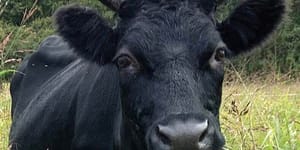Asparagus: An Aspiring Spear

Asparagus is a delicious vegetable with a layered history. How did this aspiring spear make its way from growing in the wild to appearing on our plates?
The following is an excerpt from the The Seed Detective by Adam Alexander. It has been adapted for the web.
“Nature gives us the key to every secret that concerns our happiness, and in respect of asparagus cultivation she is liberal in her teaching,” Sutton & Son – The Culture of Vegetables and Fruit from Seeds and Roots (1884)
An Aspiring Spear
The dawn chorus heralds the arrival of the first spears, an eagerly awaited culinary delight for asparagus lovers like me.
‘All good things come to those who wait’, a quote by the Victorian poet Lady Mary Montgomerie Currie (1843–1905), is certainly true for those of us who love to rush to the kitchen with an armful of freshly cut asparagus in late spring and gorge ourselves on this magnificent vegetable.
Asparagus Season
By the middle of April my first morning stop in the vegetable plot is at the asparagus bed. Can I see the early signs of pleasures to come – pale pinkish- green little noses pushing their way out of the soil?
Must I make do with just a few spears until the crop is growing full tilt in May? Can I bear to share a surplus or shall I make more soup to freeze and enjoy that asparagus taste out of season, just like my distant ancestors, the Romans?
I have never found asparagus an easy plant to establish in my vegetable plot, although to read gardening books on the subject it should be.
History of Asparagus

It was grown in Asia Minor and Syria more than 2,000 years ago and was much loved by the Greeks and Romans.
The Greeks described asparagus as the fruit of a ram’s horn thrust into the ground.
Centuries later this myth was employed as an insult – thumbs and fingers outstretched on either side of the temples signifying the horn-wearing cuckold.
The Roman elder Cato wrote instructions as to its cultivation in 200 bce and Pliny the Elder, 200 years later, described three spears together weighing the equivalent of 325g (111⁄2 oz).
So, just as today, even in Roman times size mattered.1
Where Does “Asparagus” Come From?
Asparagus gets its name from the Greeks, who took the Persian word for ‘shoot’ or ‘sprout’, asparag, to give us aspharagos, which was then Latinised to sparagus. The medieval English word is a bastardisation of this, giving us sperage and later sparrow grass.
Although it was the Mediterranean civilisations who principally embraced asparagus, it is also considered to be native to northern Europe and numerous other edible species of this genus can be found across the world.
Sutton & Sons, one of Britain’s most important plant breeders, had this to say about asparagus in 1884:
‘It is so abundant on the sandy steppes of Southern Russia and Poland as to kill out the grasses, but it takes their place in respect of utility, the horse and the cattle eat it as daily food and enjoy life and prosper…’2
Early Asparagus Uses
Asparagus was growing wild in Britain 2,000 years ago when the locals would have used it as a medicinal herb and invading Romans would happily forage for it as a delicacy.
It is thought by some historians that the Romans introduced asparagus to Britain as a cultivated crop, but when they left in 400 ce it would appear they took their love of eating it with them.
There is no evidence that Britons ever foraged for asparagus as a vegetable, either before or after the Roman occupation.
Notes
1. Alfred W. Kidner, Asparagus (London, U.K.: Faber, 1959): 19.
2. Sutton & Sons, The Culture of Vegetables and Flowers: From Seeds and Roots
(Reading, U.K.: Sutton & Sons, 1884): 7.
Recommended Reads
Recent Articles
What’s so great about oyster mushrooms? First, you can add them to the list of foods that can be grown indoors! They are tasty, easy to grow, multiply fast, and they love a variety of substrates, making oyster mushrooms the premium choice. The following is an excerpt from Fresh Food from Small Spaces by R. J.…
Read MoreEver heard the phrase, “always follow your nose?” As it turns out, this is a good rule of thumb when it comes to chicken manure. Composting chicken manure in deep litter helps build better chicken health, reduce labor, and retain most of the nutrients for your garden. The following is an excerpt from The Small-Scale Poultry…
Read MoreIn her book, The Art of Science and Grazing, nationally known grazing consultant Sarah Flack identifies the key principles and practices necessary for farmers to design, and manage, successful grazing systems. This book is an essential guide for ruminant farmers who want to crate grazing systems that meet the needs of their livestock, pasture plants,…
Read MoreThis long-lived perennial legume is used for forage and erosion control. Kudzu is edible with many medicinal uses and other applications. Pollinators of all kinds love its prodigious lavender blooms!
Read MoreAre you ready to get a jump-start on the gardening season? With a cold frame, you can get started now. A cold frame harnesses the sun’s heat before it’s warm enough to let unprotected seedlings growing outside. Essentially, it consists of a garden bed surrounded by an angled frame and covered with a pane of…
Read More








